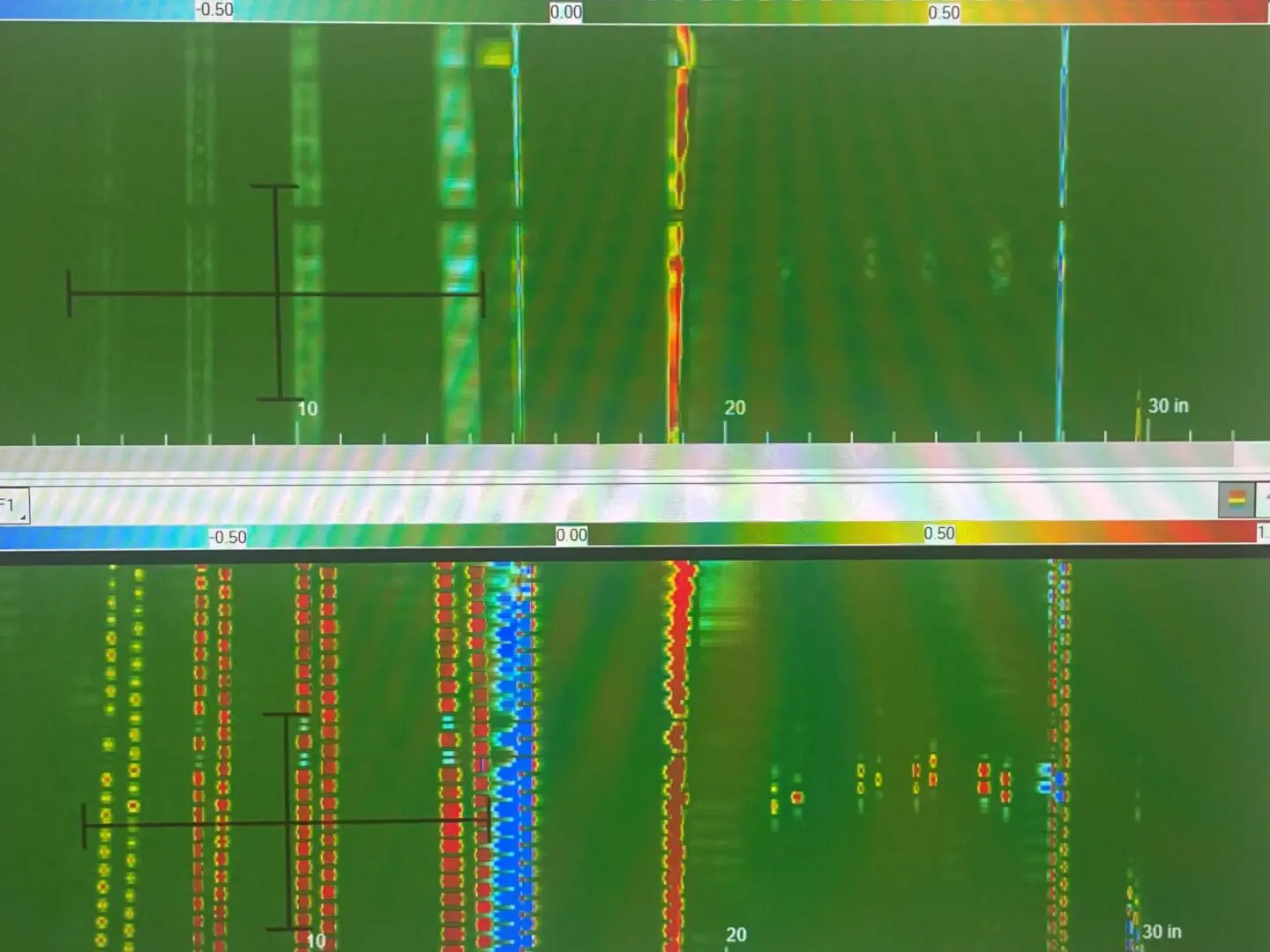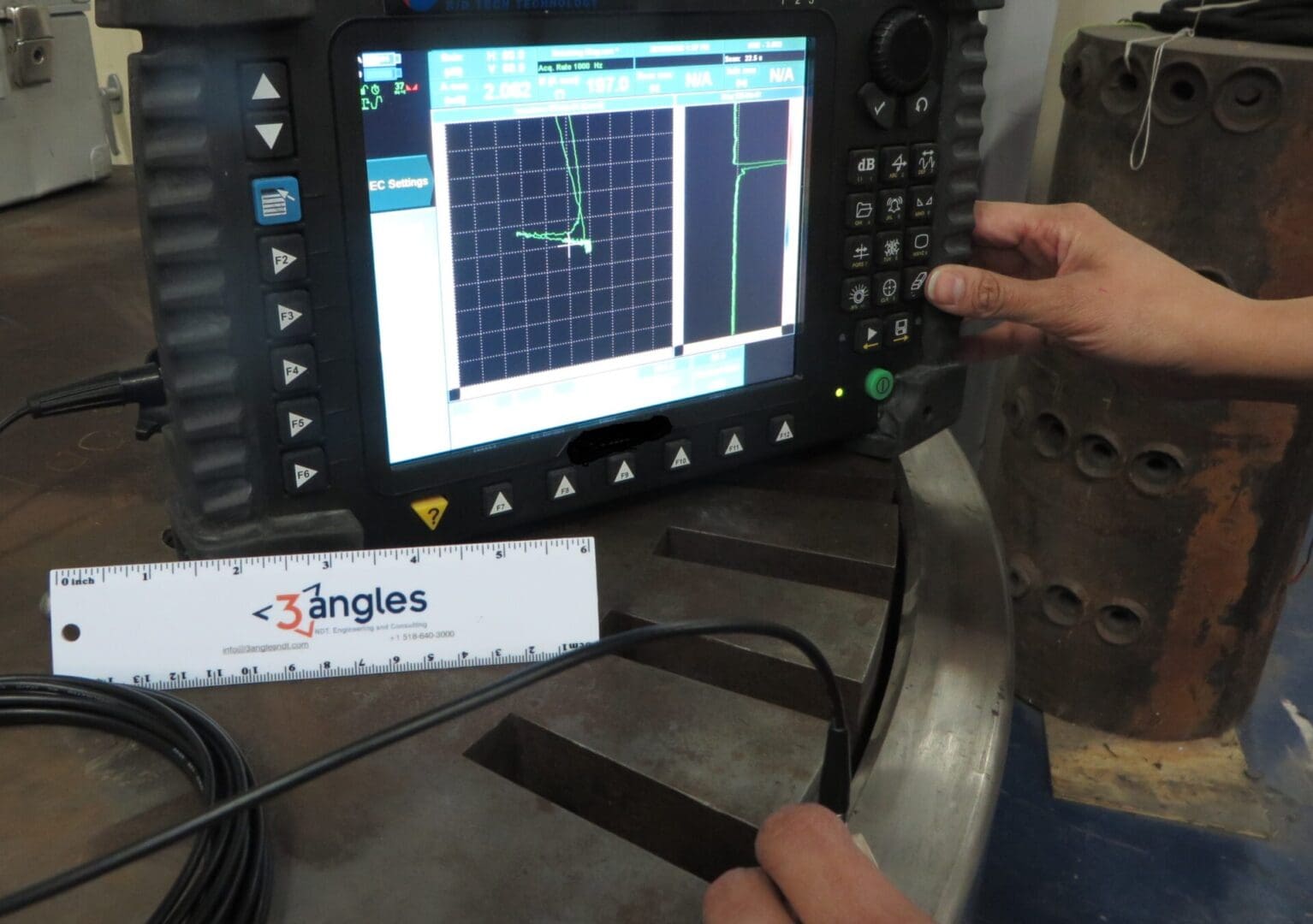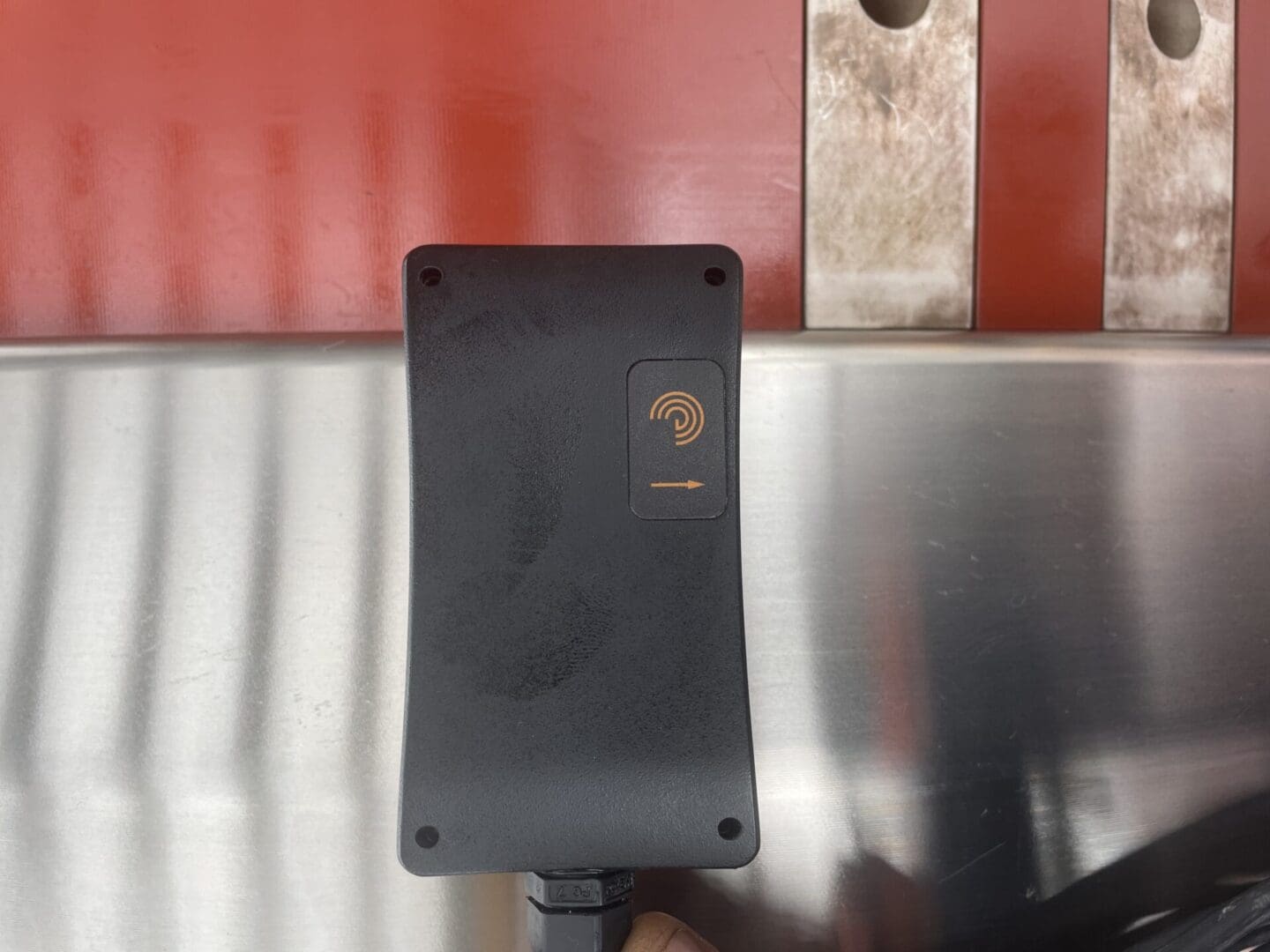Eddy Current Testing
Eddy current inspection (ET) is one of several methods that use the principal of electromagnetism as the basis for conducting examinations.
Eddy current inspection is exceptionally well suited for detecting cracks, with a high sensitivity to detecting surface-breaking cracks. Cracks disrupt the circular flow patterns of the eddy currents and weaken their strength. This change in strength at the crack location can be detected. Specifically, with the advanced computer-aided inspection technology substantial progress has been made using eddy current inspections.
How Eddy Current Testing works
The amplitude and pattern of the eddy current, and the accompanying magnetic field is interrupted or altered by variations in metal thickness or imperfections, such as (near-) surface cracking. Changing the coil's electrical impedance, in turn, impacts the movement of electrons within it.
The test frequency, as well as the magnetic permeability and conductivity of the test material, can be used to compute the standard depth of penetration, which is the depth at which the eddy current density is 37% of its surface value. As a result, test sensitivity, resolution, and penetration changes are influenced by changes in the test material's conductivity, magnetic permeability, frequency of the AC pulses driving the coil, and coil geometry.
Several variables can impact the capabilities of an eddy current inspection, including material properties, testing frequency, alignment of flows, lift-off, and surface geometry.
While lower test frequencies increase penetration, higher test frequencies improve near-surface resolution at the expense of penetration depth. Since the magnetic field goes deeper into the test item with larger coils, a larger volume of material may be examined from any given point, whereas smaller coils are more sensitive to small defects.
Benefits of Eddy Current Array Testing
- Sensitivity to surface defects
The smallest flaws can weaken materials such as carbon or steel, compromising specific safety standards. Eddy current testing equipment can accurately detect defects of 0.5 mm (0.02 in.) in length under favorable conditions.
- Detects through different layers
If you are working with materials with a multilayered structure, eddy current equipment can detect defects up to 14 layers deep without interference from the planar interfaces.
- Quick and straightforward
Eddy current is a quick, simple, and reliable inspection technique, which is ideal if you are conducting regular testing and speed is important.
Limitation of Eddy Current Testing
- Susceptible to magnetic permeability changes
Small changes in permeability can make testing of welds and other ferromagnetic materials difficult.
- Only effective on conductive materials
Eddy current can only be used to measure materials that support the flow of electrical current.
- Will not detect defects parallel to the surface
The flow of eddy currents is parallel to the surface. This means eddy current test equipment cannot detect defects that do not cross or interfere with the current.
- Signal interpretation required
Several factors can affect eddy current testing. This requires careful interpretation of signals to distinguish between relevant and nonrelevant indications.
- Not suitable for large areas
Eddy current testing on large areas requires the aid of a scanning device. Complex geometry also makes it more difficult to differentiate between defect signals and geometry effect signals.
Eddy Current Array (ECA)
An eddy current array testing technique, or ECA, enables using several eddy current coils arranged side by side in the same probe assembly. Each coil generates a signal about the phase and amplitude of the structure beneath it. This information is graphically displayed as a C-scan image exhibiting structures in a planar view and is referred to as an encoded place and time. In addition to offering viewing through C-scan imaging, ECA allows for high-resolution coverage of more significant areas in a single pass. ECA enables the use of less sophisticated fixturing and facilitates the inspection of complex shapes using specially designed probes that are made to fit the test piece's profile.
Benefits of Eddy Current Testing
- Faster inspection time
Using a multicoil probe, the user can scan the material in a single pass. This means the scan takes just a few minutes and is quicker than conventional ET and certain other NDT methods, such as magnetic particle testing (MT).
- Covers a larger area in one pass
Using multiple coils enables the user to complete the inspection in a single pass. Single-coil probes require the technician to scan the material multiple times.
- Simplifies inspection
Using eddy current array reduces the complexity of mechanical and robotic scanning systems required to move the probe.
- Inspects complex shapes
Eddy current array probes can be customized to the profile of the part being inspected. This reduces inspection limitations caused by complex test materials.
- Real-time cartography
Eddy current array technology provides real-time cartography of the inspected region, facilitating data interpretation.
- Increased accuracy
Using eddy current array probes improves the reliability and probability of detection (POD).
Our applications of Eddy Current Testing include the inspection of generator retaining rings, turbine blades, and generator dovetail slots.



